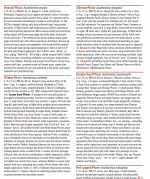Feb 23 Post proposed split of MacGillivray's Prion from Salvin's Prion.
Masello, J. F., P. G. Ryan, L. D. Shepherd, P. Quillfeldt, Y. Cherel, A. J. D. Tennyson, R. Alderman, L. Calderón, T. L. Cole, R. J. Cuthbert, B. J. Dilley, M. Massaro, C. M. Miskelly, J. Navarro, R. A. Phillips, H. Weimerskirch, and Y. Moodley. 2022.
Independent evolution of intermediate bill widths in a seabird clade. Molecular Genetics and Genomics 297: 183–198.
https://doi.org/10.1007/s00438-021-01845-3
Abstract
Interspecific introgression can occur between species that evolve rapidly within an adaptive radiation.
Pachyptila petrels differ in bill size and are characterised by incomplete reproductive isolation, leading to interspecific gene flow. Salvin’s prion (
Pachyptila salvini), whose bill width is intermediate between broad-billed (
P. vittata) and Antarctic (
P. desolata) prions, evolved through homoploid hybrid speciation. MacGillivray’s prion (
P. macgillivrayi), known from a single population on St Paul (Indian Ocean), has a bill width intermediate between
salvini and
vittata and could also be the product of interspecies introgression or hybrid speciation. Recently, another prion population phenotypically similar to
macgillivrayi was discovered on Gough (Atlantic Ocean), where it breeds 3 months later than
vittata. The similarity in bill width between the medium-billed birds on Gough and
macgillivrayi suggest that they could be closely related. In this study, we used genetic and morphological data to infer the phylogenetic position and evolutionary history of
P. macgillivrayi and the Gough medium-billed prion relative other
Pachyptila taxa, to determine whether species with medium bill widths evolved through common ancestry or convergence. We found that Gough medium-billed prions belong to the same evolutionary lineage as
macgillivrayi, representing a new population of MacGillivray’s prion that originated through a colonisation event from St Paul. We show that
macgillivrayi’s medium bill width evolved through divergence (genetic drift) and independently from that of
salvini, which evolved through hybridisation (gene flow). This represents the independent convergence towards a similarly medium-billed phenotype. The newly discovered MacGillivray’s prion population on Gough is of utmost conservation relevance, as the relict
macgillivrayi population in the Indian Ocean is very small.













